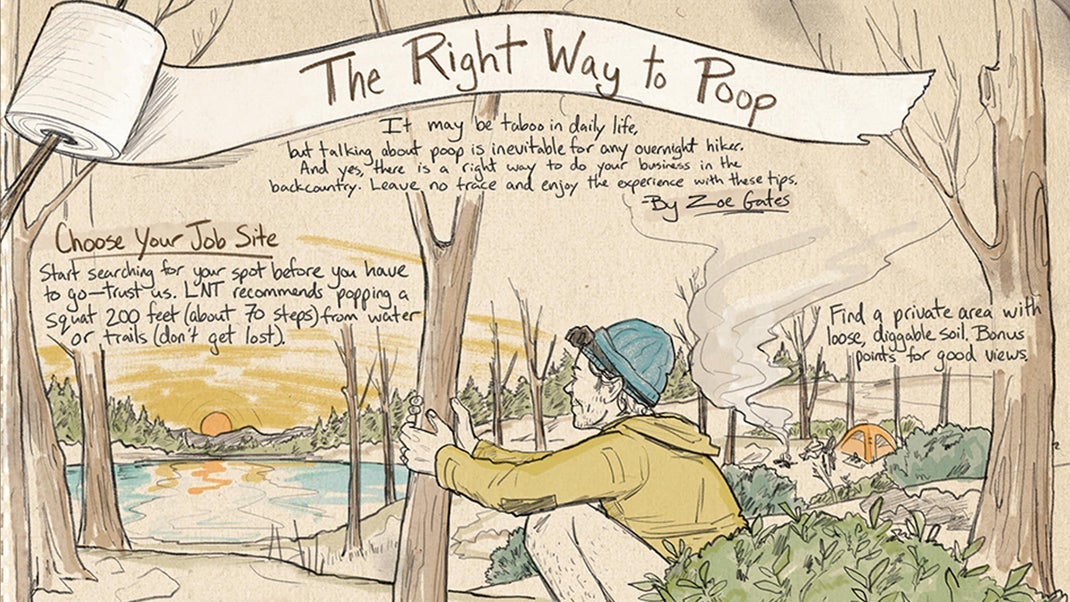The Right Way to Poop in the Backcountry


What do you do when you are way out there, climbing on some obscure wall with no toilet in sight? If you don’t have a WAG bag, burying your waste is the best choice. Save this technique for your remote backcountry missions; the high alpine and arid desert can’t handle your poop.
This article first appeared on backpacker.com.
The Gear for Your Rear
- A sealable bag or WAG bag
- Hand sanitizer
- A trowel
- Toilet paper
Choose Your Job Site
Start searching for your spot before you have to go—trust us, you don’t want to wait until your situation is desperate. LNT recommends popping a squat 200 feet—about 70 steps—from water or trails (don’t get lost). Find a private area with loose, diggable soil. Bonus points for good views.
Ready, Aim, Fire
Your cathole is your personal, single-use toilet. It should be 6 to 8 inches deep and 4 inches wide. Squat low to the ground for optimal aim—hang onto a tree trunk if you need a little support. Pack out your toilet paper in a sealable bag or place it in the cathole if local regulations allow (TP degrades quickly in wet, humid climates, more slowly in dry ones, and not at all in the desert.)
Bury the Evidence
Cover your poop with the dirt you removed from the cathole. Make it look like you were never there. Remember, your trowel should only touch dirt. Wash or sanitize your hands and revel in that weightless feeling.
WAG Bags
Some sensitive wilderness areas such as high-alpine ones, arid deserts, or high-traffic parks require the use of WAG bags instead of catholes. Check local regulations for the area where you’re camping and follow the instructions on the WAG bag’s package. Always use outhouses and pit toilets when available to minimize impact on the land.
What about #1?
Always pee at least 200 feet from water sources such as lakes and streams. In canyons or near large water sources like big rivers (anything with a flow rate higher than 500 cubic feet per second), LNT recommends peeing directly into the water to eliminate the concentration of urine in canyons and along the shore. (Large bodies of water will dilute the urine, but smaller ones won’t.)
Read More: The Wright Stuff: Crappiest Column Ever
This article is free. Sign up with a Climbing membership, now just $2 a month for a limited time, and you get unlimited access to thousands of stories and articles by world-class authors on climbing.com plus a print subscription to Climbing and our annual coffee-table edition of Ascent. Please join the Climbing team today.